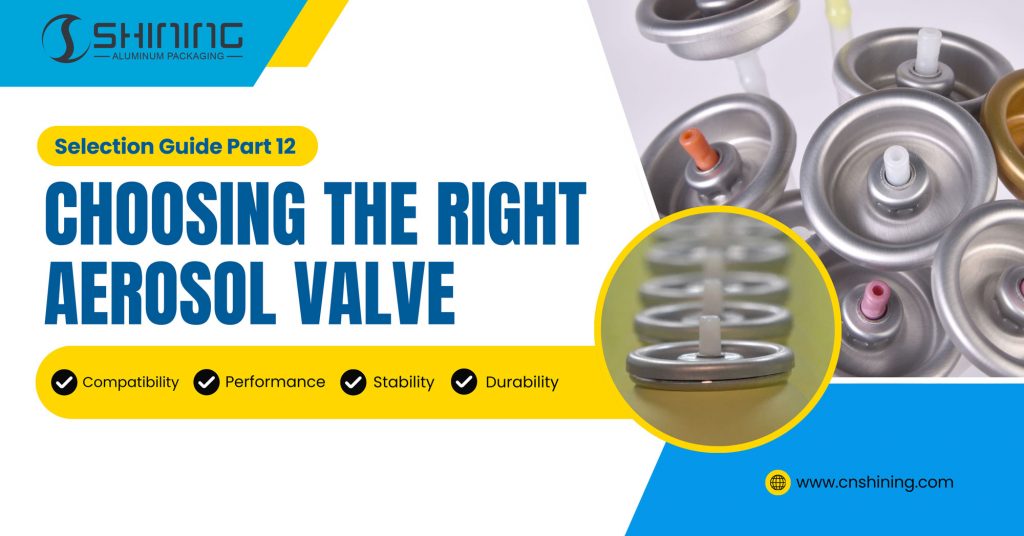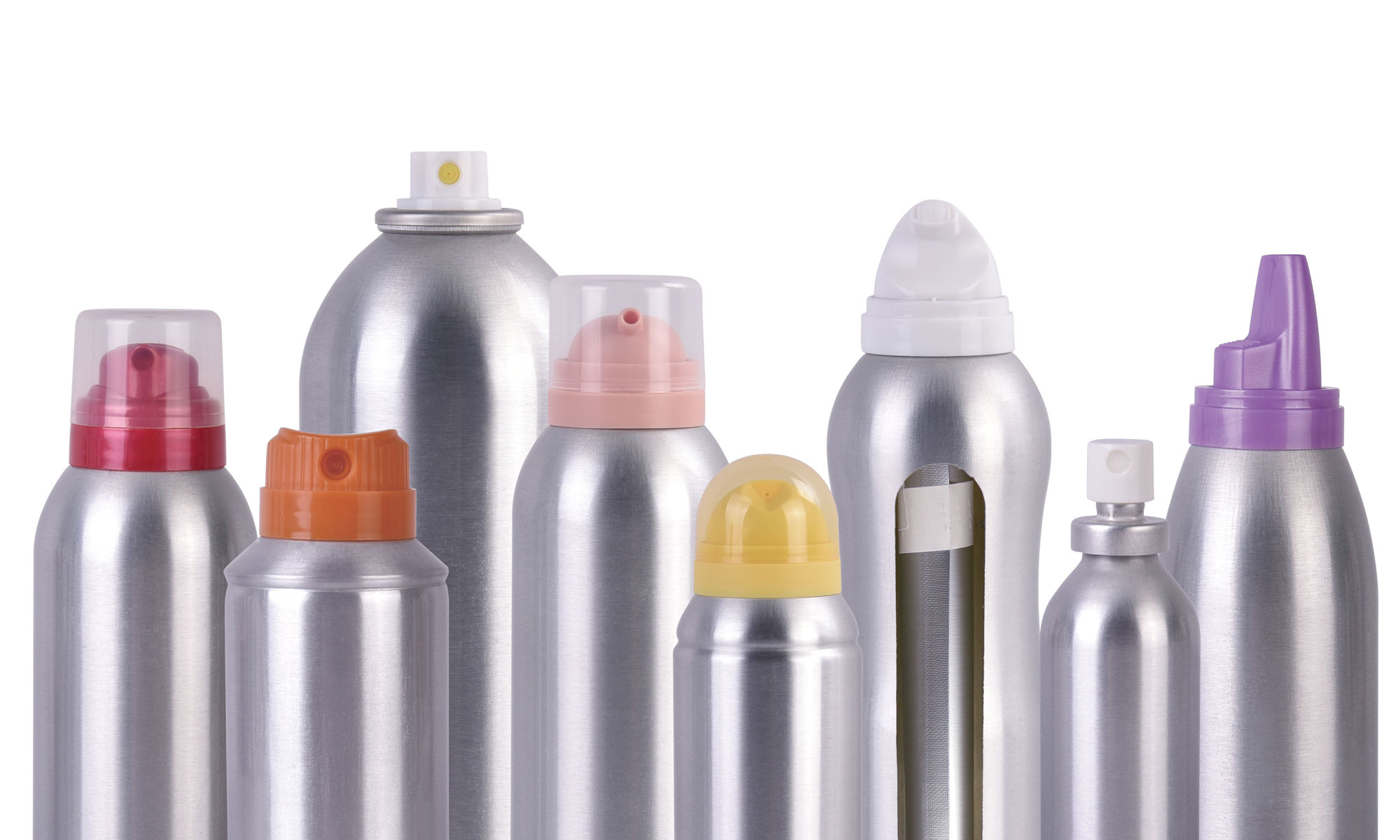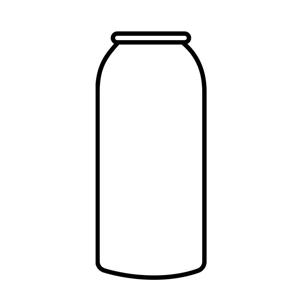소개
올바른 것을 선택하는 것에 관해서 에어로졸 밸브 귀하의 제품에는 최종 제품의 품질, 기능 및 고객 만족도에 직접적인 영향을 미치는 중요한 요소가 있습니다. 이 기사에서는 에어로졸 밸브를 선택하는 데 있어 주요 고려 사항을 안내하고, 일반적인 질문에 답하며, 최적의 성능과 장기적 내구성에 대한 덜 알려진 통찰력을 공개합니다.
에어로졸 밸브의 중요한 선택 기준
에어로졸 밸브를 선택할 때 제조업체는 제품 요구 사항과 일치하는지 확인하는 다양한 요소를 고려해야 합니다. 각 밸브 유형은 화장품 및 식품 등급 제품에서 산업용 애플리케이션에 이르기까지 특정 애플리케이션에 맞는 다양한 기능을 제공합니다. 이러한 기준을 자세히 살펴보겠습니다.
1. 제품 점도
점도는 선택해야 할 밸브 유형을 결정하는 데 중요한 역할을 합니다. 고점도 제품(크림이나 젤 등)은 원활한 분배를 위해 더 큰 구멍 크기의 밸브가 필요합니다. 반대로 저점도 제품(스프레이 또는 미스트 등)은 제어된 전달을 위해 더 작은 구멍 크기의 이점이 있습니다.
2. 스프레이 패턴 및 유량
다양한 제품은 사용자 만족과 정밀한 적용을 보장하기 위해 다양한 스프레이 패턴과 유량이 필요합니다. 예를 들어, 에어로졸 헤어스프레이는 균일한 분포를 위해 미세한 안개를 제공해야 하지만 산업용 윤활제는 더 농축된 흐름이 필요할 수 있습니다. 올바른 액추에이터, 하우징 및 밸브 설계를 선택하면 제조업체가 이러한 특정 결과를 달성할 수 있습니다.
3. 추진제 호환성
사용된 추진제 유형(액화 가스 또는 압축 가스)은 밸브의 재질과 기능에 영향을 미칠 수 있습니다. 예를 들어, CO2와 질소는 안전성 때문에 식품 등급 에어로졸에 인기 있는 옵션인 반면, 탄화수소는 다른 산업용으로 적합할 수 있습니다. 누출을 방지하고 성능 일관성을 유지하려면 추진제와 호환되는 밸브를 선택하는 것이 필수적입니다.
4. 환경 및 안전 규정
에어로졸 밸브에 대한 규정은 지역마다 다르며, 환경 안전과 사용자 보호를 보장하기 위한 엄격한 기준이 있습니다. 미국의 EPA나 유럽의 REACH 기준과 같은 국제 기준을 준수하는 것은 법적 요구 사항을 충족하는 에어로졸 밸브를 선택하는 데 필수적입니다.
5. 밸브 소재 내구성
에어로졸 밸브의 수명은 재료에 크게 좌우됩니다. 스테인리스 스틸이나 알루미늄으로 제작된 밸브는 플라스틱 밸브보다 마모와 파손을 더 잘 견딥니다. 제품 요구 사항, 예산 및 의도된 사용 환경에 따라 재료를 선택하여 제품 오작동을 방지하고 내구성을 보장해야 합니다.
호환성 및 성능 테스트
테스트는 선택한 에어로졸 밸브가 다양한 조건에서 최적의 성능을 발휘하도록 하는 데 중요한 단계입니다. 테스트할 핵심 영역은 다음과 같습니다.
1. 호환성 테스트
본격적인 생산에 앞서, 밸브 재료와 제품 내용물 간의 상호 작용을 확인하기 위해 제품 제형과의 호환성 테스트가 필수적입니다. 밸브 구성 요소의 화학 반응, 팽창 또는 수축은 테스트 중에 발생할 수 있는 일반적인 문제입니다.
2. 스프레이 패턴 및 흐름 일관성
분무 패턴, 유량, 전반적인 일관성을 평가하기 위해 통제된 테스트를 수행하면 밸브의 적합성을 확인하는 데 도움이 됩니다. 제조업체는 테스트 결과에 따라 필요에 따라 오리피스 크기나 액추에이터 유형을 조정할 수 있습니다.
3. 환경 스트레스 테스트
밸브는 다양한 온도, 습도 및 보관 조건에서 테스트하여 성능을 유지하는지 확인해야 합니다. 스트레스 테스트는 잠재적인 고장을 식별하여 밸브가 실제 조건을 견딜 수 있는지 확인하는 데 도움이 됩니다.
에어로졸 밸브의 안정성 및 내구성 평가
에어로졸 밸브의 장기적 신뢰성은 지속적인 성능과 고객 만족에 매우 중요합니다. 안정성과 내구성을 유지하기 위한 몇 가지 필수 팁은 다음과 같습니다.
1. 체중 감량 테스트
밸브 내구성을 평가하는 가장 효과적인 방법 중 하나는 무게 감량 테스트입니다. 시간이 지남에 따라 점진적인 누출이나 증발로 인한 제품 손실은 고객 불만으로 이어질 수 있습니다. 이 테스트는 장기간에 걸쳐 제품 무게를 측정하여 유지력을 모니터링하는 것을 포함합니다.
2. 내식성
습도가 높은 환경에서는 부식이 밸브 성능에 영향을 미칠 수 있습니다. 스테인리스 스틸과 알루미늄 밸브는 플라스틱보다 내식성이 뛰어나 습한 환경에서 보관할 수 있는 제품에 이상적입니다.
3. 밸브 씰 무결성
씰 무결성을 유지하는 것은 누출을 방지하는 데 필수적입니다. 일반적으로 고무나 엘라스토머로 만든 밸브의 씰은 다양한 압력과 온도에서 손상되지 않는지 확인하기 위해 테스트해야 합니다. 이러한 구성 요소를 정기적으로 점검하면 밸브의 수명을 연장할 수 있습니다.
밸브 선택을 위한 전문가 팁과 덜 알려진 기술
표준 기준과 테스트가 기본이기는 하지만, 종종 간과되는 전문가 팁은 다음과 같습니다.
- 실제 시뮬레이션으로 테스트: 실제 제품 보관 및 사용 조건을 기반으로 시뮬레이션을 설정하여 시간 경과에 따른 밸브의 성능을 확인하세요.
- 최종 사용자 경험을 고려하세요: 항상 사용자 관점에서 생각하세요. 매끄럽고 막힘 없는 스프레이는 고객 만족에 매우 중요합니다.
- 재활용 가능성 평가: 환경을 의식하는 소비자들 사이에서 수요가 증가하고 있는 재활용성을 고려하여 친환경 소재로 만든 밸브를 고려해보세요.
FAQ: 제품에 맞는 에어로졸 밸브 선택
- 고점도 제품에 가장 적합한 밸브는 무엇입니까? 고점도 제품의 경우 원활한 흐름을 보장하기 위해 더 큰 구멍 크기가 필요합니다.
- 하나의 밸브가 다양한 추진제에도 작동할 수 있나요? 일부 밸브는 다재다능하지만, 각 추진제와의 호환성 테스트가 중요합니다.
- 누출 저항성을 어떻게 테스트합니까? 시간 경과에 따른 잠재적인 누출을 파악하기 위해 호환성 및 중량 감소 테스트를 실시합니다.
- 에어로졸 밸브에 가장 내구성이 좋은 재료는 무엇입니까? 스테인리스 스틸과 알루미늄은 특히 습한 환경에서 내구성이 뛰어납니다.
- 에어로졸 밸브는 재활용이 가능한가요? 많은 에어로졸 밸브는 사용된 재료에 따라 재활용이 가능합니다.
- 에어로졸 밸브는 얼마나 자주 테스트해야 합니까? 모든 생산 배치를 정기적으로 테스트하여 품질과 일관성을 보장합니다.
- 분무 패턴 테스트의 중요성은 무엇입니까? 스프레이 패턴 테스트를 통해 최적의 제품 적용과 사용자 경험을 보장합니다.
- 에어로졸 밸브의 부식을 어떻게 방지할 수 있나요? 스테인리스 스틸이나 코팅된 알루미늄을 선택하면 부식을 방지하는 데 도움이 됩니다.
- 밸브 성능에서 딥 튜브의 역할은 무엇인가요? 딥 튜브는 균일한 분배에 필수적인 제품 흐름을 조절하는 데 도움이 됩니다.
- 액추에이터 유형은 제품 배송에 어떤 영향을 미칩니까? 다양한 액추에이터가 분무 분산 및 유량을 제어하여 적용 정밀도에 영향을 미칩니다.
결론
올바른 에어로졸 밸브를 선택하려면 제품 요구 사항을 이해하고, 철저히 테스트하고, 내구성을 우선시해야 합니다. 이러한 지침을 따르면 제조업체는 제품 품질과 고객 만족도를 높이는 정보에 입각한 결정을 내릴 수 있습니다. 에어로졸 밸브에 대해 자세히 알아보거나 특정 요구 사항이 있는 경우, 문의하기 또는 우리 공장을 방문해 보세요.






















